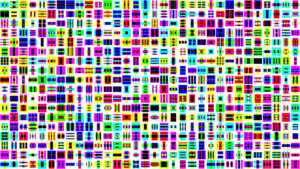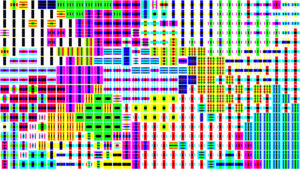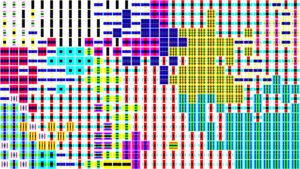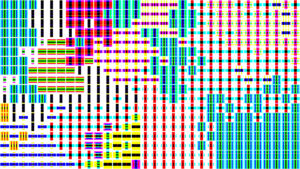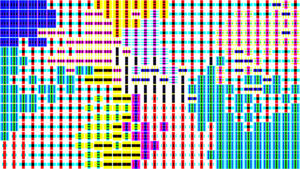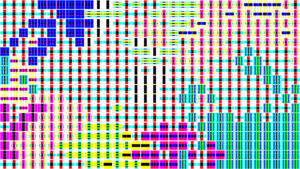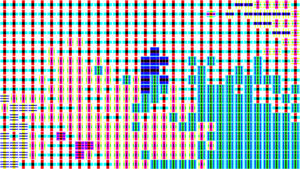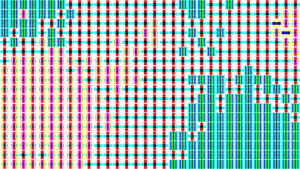Attention Economy displays a closed ecosystem, not unlike a terrarium or ant farm. The system consists of a set of visual objects arranged in a grid. Each object is initially assigned a random set of visual features, arranged in three color layers: cyan, magenta, and yellow. Objects can “look” at each other and are rewarded for attracting attention (looks).
Objects that consistently fail to attract attention eventually “die” and their spot in the grid is taken by other objects in the grid that have been more successful at attracting attention.
How does an object decide which other object in the grid it will look at? This decision is based on four factors: proximity (a preference for looking at nearby objects), popularity (a preference for looking at objects that are also being looked at by other objects), novelty (a preference for looking at objects that are different from the typical object in the grid), and self-similarity (a preference for looking at objects that resemble the object doing the looking).
Each object is initially allocated a fixed number of “eyeball” credits. Over time, these credits are redistributed among the objects, but the total number of credits within the ecosystem is constant, producing a closed economy.
When an object runs out of eyeball credits, it is deleted from the grid, leaving an opening in the grid that needs to be filled. Typically, one of the objects directly adjacent to the opening in the grid is selected and given the opportunity to “bud,” creating a cloned copy of itself that is placed in the opening. The source object transfers half of its eyeball credits to its cloned copy.
While the program can run indefinitely, it will eventually reach a state in which all the objects in the grid are visually identical. This is because, over rounds, the visual diversity of objects in the grid can only decrease. For example, any primitive visual feature that is not present among the initial set of objects has no way of subsequently arising among those objects, as all reproduction involves copying features from other objects already present in the grid.
